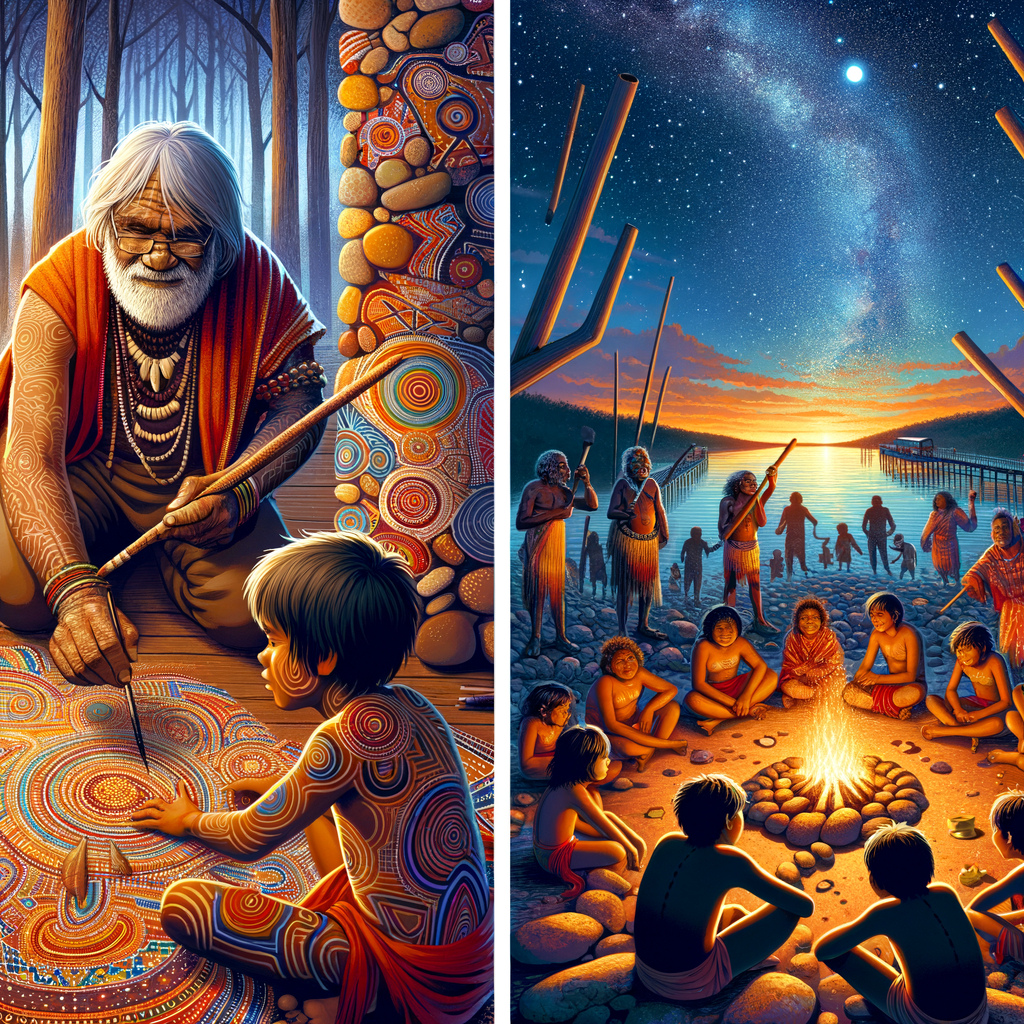Physical Address
304 North Cardinal St.
Dorchester Center, MA 02124
Physical Address
304 North Cardinal St.
Dorchester Center, MA 02124

Aboriginal culture is one of the oldest continuous cultures in the world, with a rich tapestry of traditions, beliefs, and practices that have been passed down through generations for over 65,000 years. This article aims to delve into the depths of Aboriginal culture and traditions, exploring their unique customs, spiritual beliefs, art forms, storytelling methods and connection to land.
In Aboriginal culture, spirituality is deeply entwined with every aspect of life. The Dreamtime or ‘The Dreaming’ is a significant part of Aboriginal spirituality. It refers to a time when ancestral spiritual beings created landforms and life. These stories form an integral part of understanding their relationship with the land and animals.
Each tribe has its own set of Dreaming stories which are passed down orally from generation to generation. They provide guidance on how to live harmoniously with nature and other beings. These narratives also serve as law enforcement mechanisms within communities.
To understand Aboriginal culture fully, one must comprehend their profound connection to land. For them, land isn’t just soil or rocks or minerals but a whole environment that sustains and is sustained by people and culture.
Land management practices such as controlled burning demonstrate this deep respect for nature’s balance. By using fire in a controlled manner they regenerate vegetation and prevent larger more destructive fires from occurring.
Sacred sites are places within the landscape that hold significant cultural values for Aboriginal people. They can be natural features like rivers or mountains or man-made structures like stone arrangements or art sites.
These sites often have strong associations with Dreaming stories and ancestral beings. Protecting these sites is of utmost importance to Aboriginal people as they are seen as a link between the past, present and future.
Aboriginal art is one of the most recognised forms of Indigenous expression around the world. It includes various mediums like painting on bark, carving in wood and rock, weaving and sculpture, body decoration and ground designs.
These artworks often depict stories from The Dreaming using symbols. They serve as a means of communication between generations, preserving their history, knowledge and culture.
Ceremonies or corroborees play a vital role in Aboriginal culture. They can range from small family events to large gatherings involving several communities. Music, dance and costumes are integral parts of these ceremonies.
The didgeridoo (a wind instrument) and clapping sticks are commonly used musical instruments. Dances often depict animal behaviours or hunting activities while costumes made from local materials symbolise different elements of their stories.
Language is another crucial aspect of Aboriginal culture. There were once more than 250 distinct languages spoken by Aboriginal people across Australia. Each language group had its own cultural practices and knowledge systems which were expressed through their unique language.
Efforts are being made today to revive many of these languages that have been lost due to colonisation. Language revival is seen as an important step towards healing and strengthening Aboriginal identity.
Elders hold a respected position in Aboriginal communities. They are the custodians of traditional knowledge who pass down laws, customs, Dreaming stories and important life skills to younger generations.
In traditional Aboriginal societies, kinship is the foundation of all social interactions and relationships. Their kinship system determines how people relate to each other and their roles, responsibilities and obligations regarding one another, ceremonial business and land.
Exploring Aboriginal culture provides a glimpse into an ancient world where spirituality, respect for nature, storytelling and community hold great significance. It offers valuable lessons in sustainability, harmony and interconnectedness that are just as relevant today.